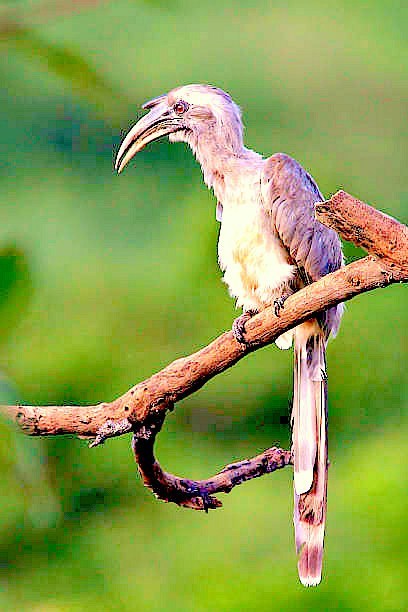ERROR : Server Busy(-1105)
ERROR : Server Busy(-1105)
Indian grey hornbill (Ocyceros birostris)
This brownish-grey bird is the most common of the Indian hornbills. It is among the smallest of the Indian species, similar in size to the Malabar grey hornbill. Its blackish beak has a pointed casque. The long grey tail is tipped black-and-white, which is conspicuous when the bird is landing. The male has red-brown eyes with black orbital skin, female has smaller casque, dark brown eyes and dull red orbital skin. Call is a variety of squealing and cackling notes and some short piping sounds. One of their calls is a shrill "wheee"; the other is a cackling "k-k-k-ka-e". |

